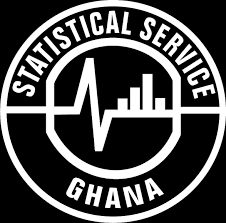Ghana’s inflation rate fell to a 12-month low in September, providing room for the central bank to leave borrowing costs unchanged next month.
Annual inflation eased to 38.1% from 40.1% in August.
Government Statistician Samuel Kobina Annim announced this at a press conference in Accra on Wednesday.
According to him, last month’s inflation was driven by alcoholic beverages, tobacco and narcotics, and food and non-alcoholic beverages, with both divisions recording an inflation rate of 49.4 percent.
This was followed by personal care, social protection and miscellaneous services (49.2%); furnishings and household equipment (44.9%); clothing and footwear (32.5%); health (31.3%); and recreation and culture (30.1%). The rest are housing, water and electricity (28.6%); transport (25.9%); information and communication (21.1%); restaurants and accommodation (19.5%); and education services (11.3%).
The insurance and financial services division recorded the lowest inflation rate of five percent.
Ghana’s economy has been battling with high inflation, with inflation reaching a 22-year high of 54.1 percent in December 2022.
Inflation began a downward trend in January 2023, consistently declining to 41.2 percent in April 2023. It, however, started inching up again in May, hitting 43.1% in July.
The months of August and September saw inflation decline to 40.1 percent and 38.1 percent, respectively, which is the lowest inflation recorded since September 2022, when inflation was 37 percent.
The Monetary Policy Committee of the Bank of Ghana has set an end-of-year inflation target of 29 percent.
Food inflation dropped from 51.9 per cent in August to 49.4 per cent in September, with non-food inflation also dropping from 30.9 per cent to 29.3 per cent within the same period.
Inflation for locally produced items was 37.3 per cent, while that for imported items was 39.9 per cent.
Food inflation was driven by tea and related products, which recorded an inflation rate of 117.1 per cent.
This was followed by cocoa drinks (80%); fruit and vegetable juices (62%); coffee and coffee substitutes (54.7%); fish and other seafood (56.9%); milk, other dairy products and eggs (54%); oil and fats (50.7%); and cereals and cereal products (50.7%).
The rest are sugar, confectionery and desserts (50.6%); live animals and meat (48.8%); ready-made food (47%); vegetables, tubers, plantains, etc. (46.3%); and water (35.4%). Fruits and nuts recorded the lowest inflation of 33.5 percent under food inflation.
Under regional inflation, the North East Region recorded the highest inflation at 54.4 percent, with the Ashanti region recording the lowest rate at 31.2 percent.
This decline offers the central bank the opportunity to maintain the current lending rates in the upcoming month.
On Wednesday, the Ghanaian cedi strengthened by 0.1% to reach a rate of 11.7521 per US dollar. However, the nation’s 2032 dollar bond saw a decrease of 0.3 cents, trading at 43.29 cents on the Dollar.
Meanwhile, the International Monetary Fund (IMF) has lowered Ghana’s average inflation forecast for 2023 to 42.2% from the earlier 45.4%. It is also forecasting an end-year inflation of 31.3%.









